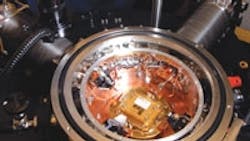Transistor Performance: High Potential For Silicon-Germanium?
Thinking of transistors for mobile electronics? Researchers have developed silicon-germanium (SiGe) transistors with record-setting performance, low energy consumption-and no manufacturing cost penalty.
Georgia Tech and IBM have demonstrated that a speed of half-a-trillion cycles per second can be achieved in a commercial silicon-based technology, using large wafers and silicon-compatible, low-cost manufacturing techniques, explains Georgia Tech's John D. Cressler. According to Cressler, a professor in the School of Electrical and Computer Engineering, the research is redefining the upper bounds of what is possible using SiGe nanotechnology techniques. Although the record performance was attained at extreme cold temperatures, the research seems to suggest that improved transistor performance could come about even at room temperature.
At room temperature, today's conventional SiGe devices operate at approximately 350 GHz. The research results of 500 GHz were achieved at 4.5 Kelvins, a temperature attained by using liquid helium cooling. Performance measurements were made using a specialized high-frequency test system at Georgia Tech's Electronic Design Center.
"Having a silicon-based technology that is compatible with low-cost IC manufacturing -- while still providing these levels of performance -- allows us to envision integrating these devices into systems that would be affordable for emerging commercial markets as well as defense applications," he says.
The commercial applications include communications gear such as cell phones, space electronics platforms and remote sensing systems.
Cressler says the next step in the research process will be to further the understanding of the physics behind the performance of the SiGe devices. Simulations suggest that the technology could ultimately support much higher (near-terahertz) operational frequencies at room temperature.
